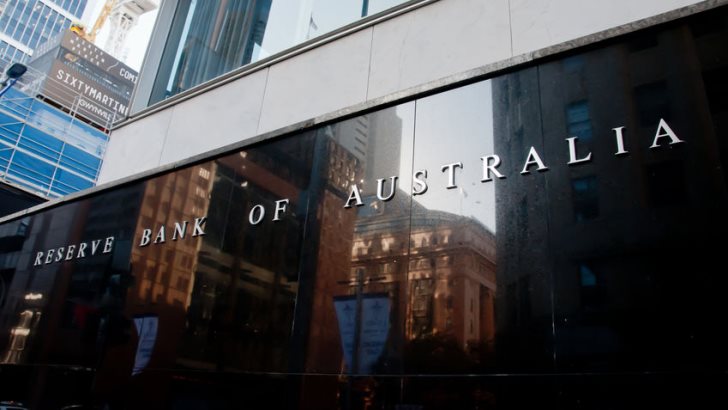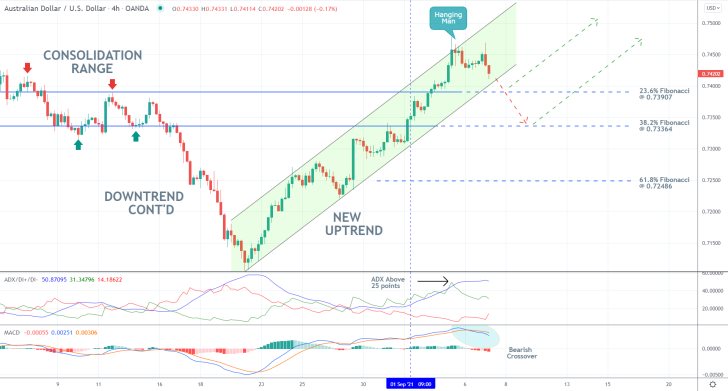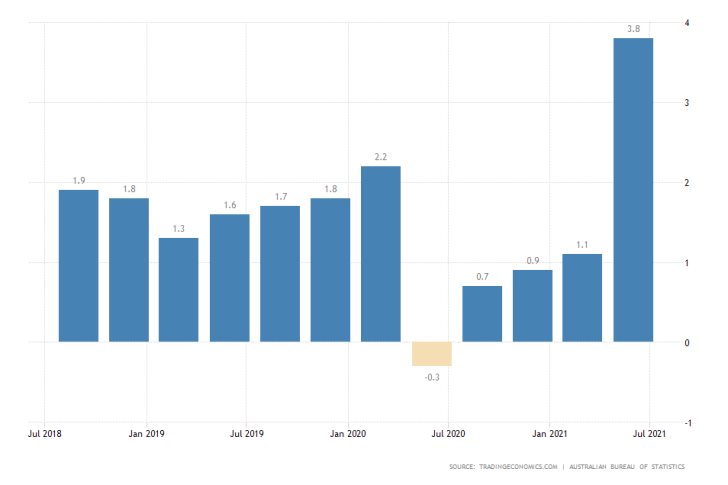
The rampant spread of the Delta variant worldwide is causing new disruptions to global economic activity, which is leading to renewed investors' interest in more easily convertible currencies. This is good news for U.S. dollar bulls. Check out our comprehensive EURUSD analysis to learn about the greenback's path to recovery.
At its meeting earlier today, the Governing Council of the RBA expectedly decided to maintain the near-negative Cash Rate unchanged at 0.10 per cent. The Delta variant fallout on Australia's economic activity prompted the Council to dial back its growth expectations for the third quarter.
Among other things, the fallout is disrupting the global supply chains, which keeps demand high but stymies productivity. RBA's prevailingly dovish rhetoric had an adverse impact on the value of the Aussie.

The AUDUSD was rising until recently in an ascending channel, as shown on the 4H chart above. Yet, the newly revised recovery outlooks of the RBA are likely to cause a temporary correction within the uptrend.
While the broader uptrend continues to be active, as underpinned by the ADX indicator, the bearish crossover on the MACD signals the prevalence of bearish momentum in the short term.
The emergence of a Hanging Man candle from the upper limit of the ascending channel elucidates the likely beginning of the new correction. The price action is likely to drop to either the 23.6 per cent Fibonacci retracement level at 0.73907 or the 38.2 per cent Fibonacci at 0.73364 before bulls can regain control.
Notice that the two Fibonacci thresholds roughly outline the boundaries of the previous consolidation range. This makes the probable dropdown of the price to one of the two limits of this previous support area seem even more likely.
RBA's dialled back growth expectations
Despite the recent growth in consumer prices, which is caused by the aforementioned heightened demand, the RBA had to recalibrate its outlook on the likely path to recovery. This is just as inflation reached 3.8 per cent, the highest level since October 2008.

"Prior to the Delta outbreak, the Australian economy had considerable momentum. GDP increased by 0.7 per cent in the June quarter and by nearly 10 per cent over the year. […] The recovery in the Australian economy has, however, been interrupted by the Delta outbreak and the associated restrictions on activity. GDP is expected to decline materially in the September quarter [...]. "
That is why the Council decided not to change the scope and pacing of its asset purchase facility. The bank will continue to "purchase government securities at the rate of $4 billion a week and to continue the purchases at this rate until at least mid-February 2022."
Trendsharks Premium
Gold is undergoing a correction, as investors take profits to offset losses from falling stock prices, impacting their margins. However, we anticipate a renewed wave of [...]
The Swiss stock market index is mirroring its global counterparts, such as Germany 40 and US100, experiencing a sharp decline following the announcement of new [...]
We’re analyzing the weekly chart to grasp the broader market trend. Over the past three years, the US30 index has surged by 17,000 points, often resembling a nearly straight [...]
Over the past week, the DAX has experienced a sharp decline, plunging by an astonishing 3,400 points. This downward movement is not isolated, as its international counterparts, such as the UK100 and US100, are also facing significant [...]
EURUSD recently formed a double top at 1.0930, signaling a potential trend reversal, and has since begun a correction. After a 600-pip rally since early March, a pullback at this stage is both expected and healthy. Given these conditions, we are placing a [...]
Since early March, EURJPY has surged nearly 1,000 pips, providing us with several excellent trading opportunities. However, as the rally matures, many early buyers are beginning to take profits, leading to a noticeable slowdown in the uptrend. On Friday, the pair formed a [...]
The AUDJPY currency pair continues to be dominated by bullish momentum, as multiple golden cross patterns reaffirm the strength of the ongoing uptrend. Despite this, we are witnessing a much-needed [...]
The EURAUD currency pair appears to be undergoing a trend reversal, signaling a potential shift in market direction. A notable technical development is the formation of a Death Cross on the chart, a widely recognized bearish indicator that typically suggests a [...]
After securing an impressive 200-pip profit last week, the EURJPY currency pair is now undergoing a southward correction, retracing some of its recent gains. Despite this temporary pullback, the Golden Cross remains intact, reinforcing our view that the overall trend continues to be [...]
The appearance of a Golden Cross in Silver strengthens our analysis that the metal is currently in a strong uptrend, indicating further bullish momentum in the market. This technical pattern, where the short-term moving average crosses above the [...]
This trade presents a considerable level of risk and can be classified as an opportunistic move based on recent price action. The GBPUSD currency pair has experienced a substantial bullish rally, surging by nearly 500 pips in a strong upward movement. However, after this extended period of appreciation, the pair is showing signs of a potential [...]
The anticipated Death Cross on the SMI20 appears to be failing as price finds strong support at the 23% Fibonacci retracement level. After testing this area, the index has shown bullish strength, printing several large green candles, signaling an increase in [...]
A Golden Cross has just appeared on the USDJPY chart, signaling a potential bullish move. This technical pattern occurs when the 20 period moving average crosses above the 60 period moving average, a widely recognized indication of increasing [...]
After 2 months of a down trend, we finally see some indications of price recovery for Oil. The golden cross, a historic buy signal, supports this [...]
For the past month, the German DAX40 has experienced a remarkable 10% surge, reflecting strong bullish momentum. Despite ongoing market volatility and frequent pullbacks, every dip continues to attract fresh buyers, reinforcing the [...]
Oil continues its downward trajectory, despite occasional pullbacks. The overall trend remains bearish, reinforced by multiple Death Cross patterns, a classic sell signal indicating further weakness. Adding to this bearish outlook, the critical [...]
Over the past few days, gold has experienced a sharp decline of more than $100. This downturn can be attributed in part to traders securing profits to manage their margins, which are under strain due to the significant drop in major indices. Currently, gold has fallen below the [...]
The NASDAQ 100 index is showing strong bullish momentum, as evidenced by the formation of a Golden Cross on the chart. This classic buy signal occurs when the short moving average crosses above the long term moving average, suggesting that upward momentum is [...]
The EURAUD currency pair has encountered a significant resistance level, failing to break above the critical 61% Fibonacci retracement level. This suggests that bullish momentum is weakening, reinforcing the case for a potential downward move. Given this technical setup, we favor entering a [...]
The UK100 is experiencing a remarkable rally! Over the past few weeks, the British stock market index has surged nearly 800 points. Each minor dip has attracted more buyers, fueling the bullish momentum. However, since last week, we’ve observed a slight [...]




















